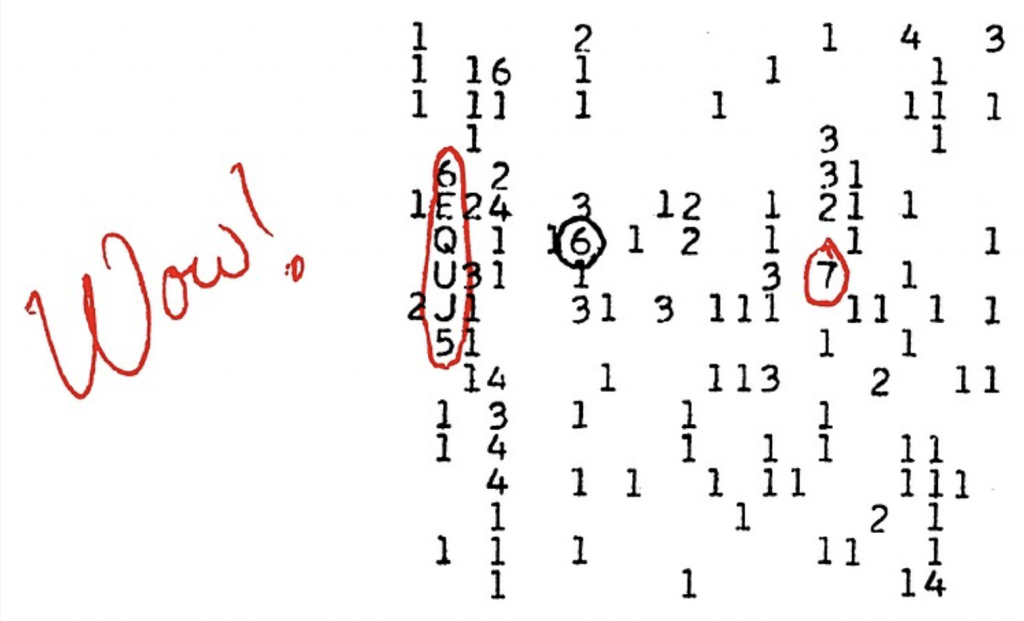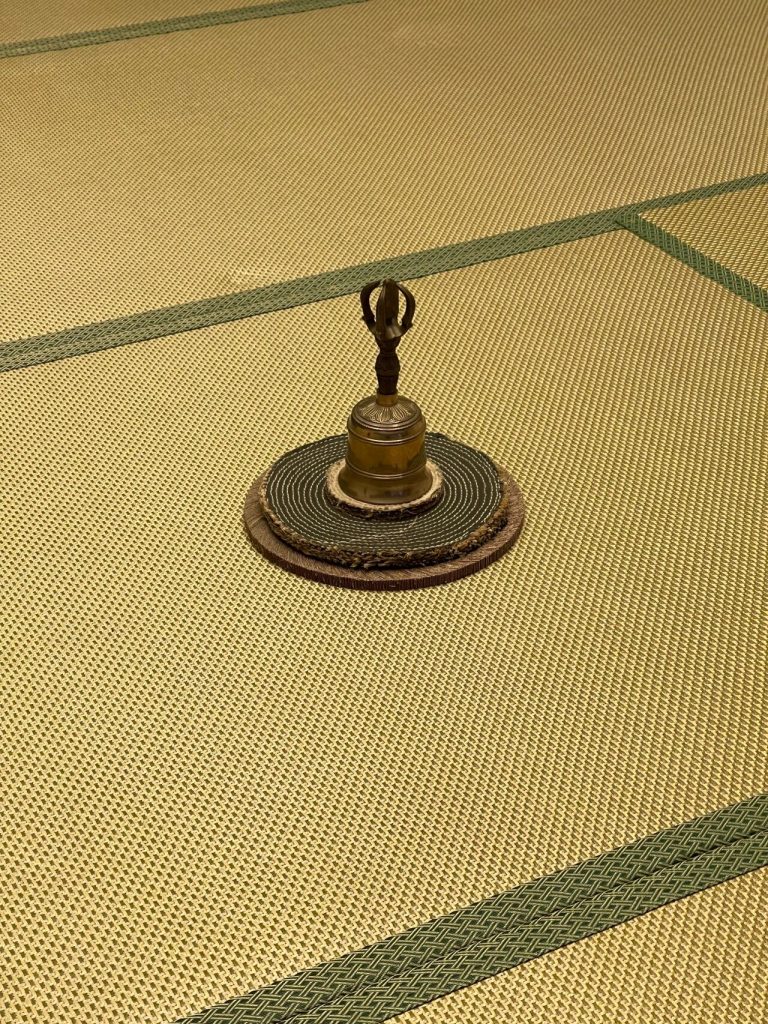
In early 2025, Gao Lei created the interactive installation Beyond the Cave on the rooftop of Suhe Haus. Its structure and concept take as their backdrop the China Industrial Bank Warehouse, built in 1930—a century-old building standing by Suzhou Creek in Shanghai, erected during the Republic of China era, at a historical juncture between modernization and the awakening of national industry. On November 11, 2025, he will present his solo exhibition Space 6EQUJ5 at Longlati (121.47296 E; 31.24157 N). The exhibition also take this building as a core reference, weaving the past more tightly into a fresh conceptual projection.
6EQUJ5 originates from the mysterious extraterrestrial radio signal known as the Wow! signal. On August 15, 1977, Ohio State University’s Big Ear radio telescope captured an intense electromagnetic wave lasting 72 seconds. On-duty astronomer Jerry R. Ehman circled this distinctive character sequence on the data printout. Astronomers later pinpointed a potential source to 2MASS 19281982-2640123, a Sun-like star 1,800 light-years away in the constellation Sagittarius the Archer. Forty-eight years later, however, this enigmatic signal’s fleeting blip remains unresolved. This transient cosmic message—echoing the faint yet profound bond between humanity and the unknown—has become, Gao’s starting point to reconsider how signal, time, space and sound interlock and dovetail.

“ Wow!” signal, represented as ‘6EQUJ5’. Pic: Big Ear Radio Observatory and NAAPO
Within the temporal coordinates of this building, Gao carries forward his enduring exploration of the “object.” From the early Wilderness (2016) to Beyond the Cave (2025), and now to Space 6EQUJ5 (2025), he constantly traverses the boundary between reality and concept. Spanning historical relics, medical vessels, mechanical instruments, and ritual implements, these “objects” are both fragments of civilization and vessels for storing time. If the ringing bells in his prior rooftop installation Beyond the Cave might be interpreted as a “deferral” of signals sent to the cosmos, the ticking of mechanical clocks in Space 6EQUJ5 would serve as the echo and reconstruction of temporalities forged by twentieth-century technologies. From a Republican-era (1912-1949) bronze shoe rack and dental rinsing basin to a late-Qing fire hose, a Tibetan ritual gong, and a syringe repurposed as a paintbrush—all stand as Gao’s tools to capture and record signals across time and space. On the windows, two photographic works from his Untitled series (2017)—each featuring sheets of blue paper by Felix Gonzalez-Torres—partially filter natural light via a framework evocative of Gothic stained glass. They, in turn, transform the daily space of tatami (畳) into a meditative, hallucinatory chamber.

The team was able to test its idea when the two comets appeared again in November 2016. Pic: CPS
In The Doors of Perception (1958), Aldous Huxley reflected on his personal experiences with hallucinogens, proposing that the brain and sensory organs function primarily as eliminative rather than productive mechanisms—that is, to meet and safeguard the body’s basic physiological needs, the brain selectively retains only a tiny fraction of the immense sensory input available to it. In Sonic Warfare: Sound, Affect, and the Ecology of Fear (2009), Steve Goodman, through the concept of acoustic territorialization, reveals how sound constructs invisible boundaries of emotion and power through frequency. While these two theories may appear divergent, they converge on a shared terrain—the threshold of perception—each probing the very ground of its own relevance.

“ Wow!” signal, recorded under the code ‘6EQUJ5’, showing its 72-second signal curve detected in 1977. Pic: Maksim Rossomakhin

Gao Lei, Beyond the Cave 6EQUJ5, 2025, flap wheel, cotton wheel, brass Taoist bell, 11.5 × 11.5 × 25 cm.
By seeking out the fissures of territory, Gao reconstructs a temporally and spatially disjunctive space. This Space, however, is not confined to a geographical— it unfolds as an inner realm of micro-perception, an emergent site of becoming aligned with the cosmic signal 6EQUJ5. Through the theatrical orchestration of sound, light, and painting, he crafts an enclosure for listening and meditation, a chamber attuned to both sensory and spiritual resonance alike. These elements together form a temporary signal station poised between modern civilization’s Tower of Babel and Prometheus Fire: transmitting and disrupting, capturing and eluding all at once.
This exhibition will also serves as an anchor for Gao Lei’s future project(s) at Longlati—a response sent from the cave, the space, and beyond toward the 6EQUJ5 signal that was received from Sagittarius nearly 1,800 years ago.
About the Artist

Gao Lei. Courtesy of the artist
Gao Lei‘s art practice spans multiple media, including installation, sculpture, photography, and painting. Gao often adopts everyday objects and “standardized” industrial products as the essential component, whose works are manipulated through synthetic or abstract regulatory forms, in which the functions, properties, and meanings are tampered with or added through blurring transformation. Thus, they become a scale or model for measuring various domains such as the body, power, consumption, and religion. Through precise material testing and vectorization of graphics, Gao’s works, along with the objects they confront and the questions raised, alternate between spatial and conceptual dimensions, allowing the viewer to re-examine and remeasure our inherent boundaries with the world using a standard other than that of experience.
Gao Lei (b. 1980, Changsha, China) He received his Bachelor of Arts from the Digital Media Art Department of the Central Academy of Fine Arts, Beijing, China. He currently lives and works in Shanghai. Gao’s works have been the subject of solo exhibitions and double solo exhibition at Museum of Contemporary Art Taipei (Taipei, China), Beiqiu Contemporary Art Museum (Nanjing, China), ShangART Gallery, (Shanghai, China), White Space (Beijing, China), Arario Gallery (Seoul, Korea) etc. His works have also been exhibited in international art institutions including, Ullens Center for Contemporary Art (Beijing, China), Minsheng Art Museum (Shanghai, China), Long Museum (Shanghai, China), TANK Shanghai (Shanghai, China), Hao Art Museum (Shanghai, China), Guangdong Times Art Museum (Guangzhou, China), TAG Art Museum (Qingdao, China), A4 Art Museum (Chengdu, China), Art Museum Institute of Modern Art (Valencia, Spain), Tinguely Museum (Basel, Switzerland), Ludwig Museum (Koblenz, Germany), National Museum of Modern and Contemporary Art (Seoul, Korea), and others.






